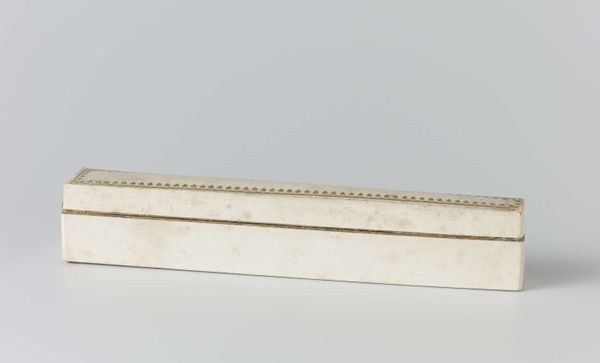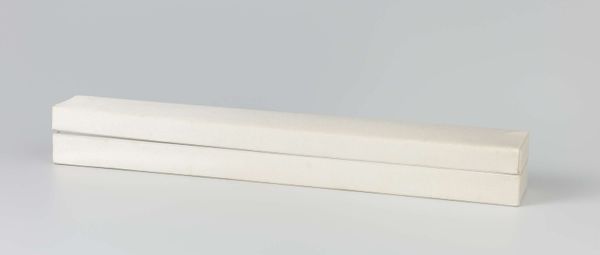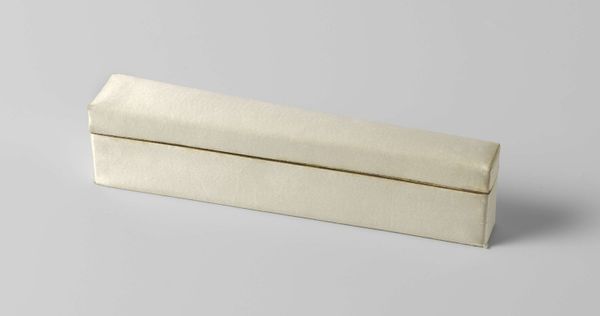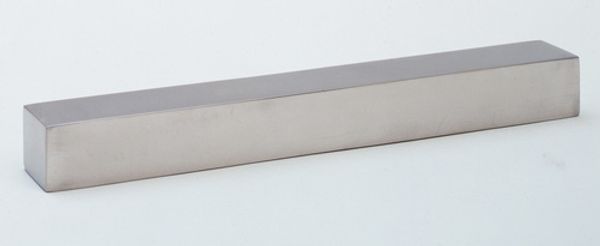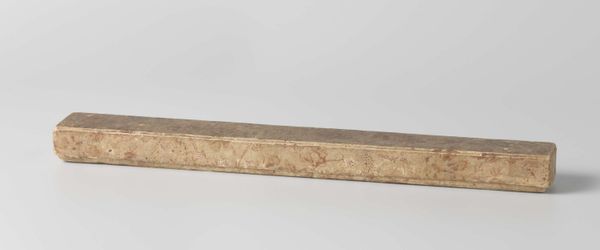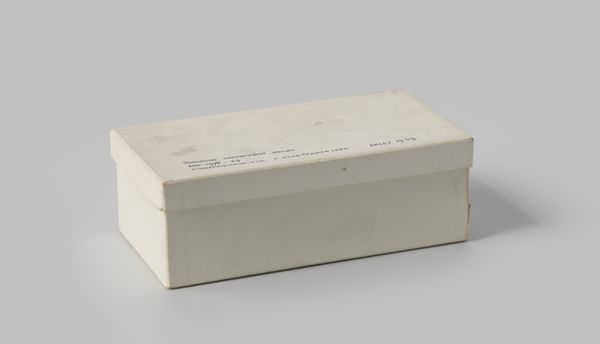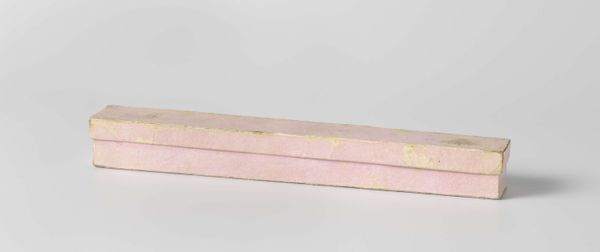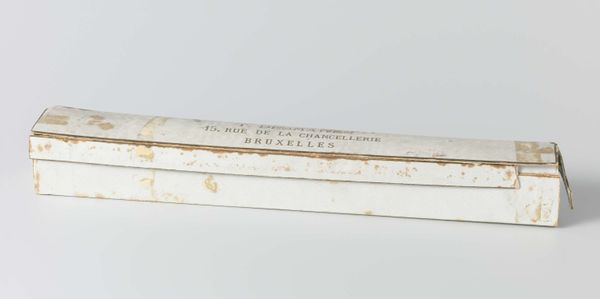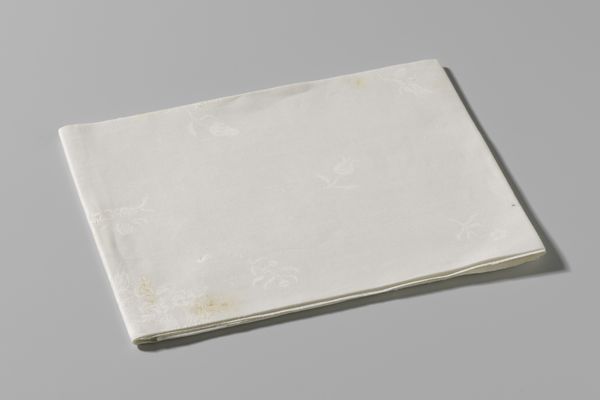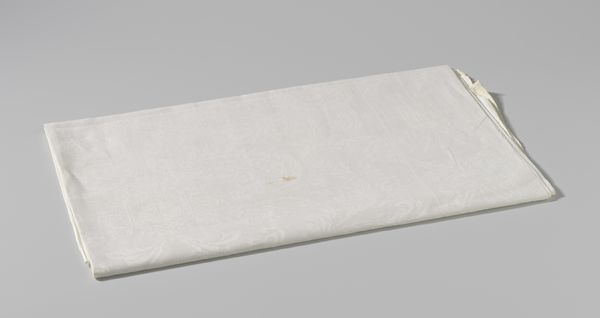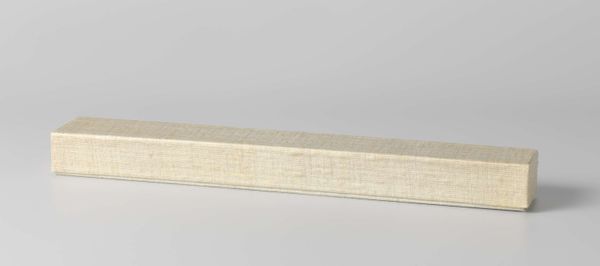
Waaierdoos van karton, bekleed met cremekleurige zijde waarop de goudkleurige initialen C.D.W. en aan de binnenkant beplakt met wit papier waarop in goud Tiffany & Co is gedrukt c. 1865 - 1875
0:00
0:00
Dimensions: length 34.5 cm, width 5.8 cm, height 4.4 cm
Copyright: Rijks Museum: Open Domain
Editor: This is a fan box made by Tiffany & Co., sometime between 1865 and 1875. It's crafted from cardboard covered in cream-colored silk, with gold initials and the Tiffany & Co. logo inside. It looks so pristine; it makes me think about the hidden histories within everyday objects. What significance might such a seemingly simple box hold? Curator: Indeed. This fan box presents an opportunity to explore the cultural landscape of the late 19th century. Tiffany & Co., already a powerful brand, produced this object during a period marked by significant social shifts, particularly concerning gender roles and the rise of consumer culture. Consider, for instance, who would have owned such a box? What does its very existence tell us about the expectations, rituals, and social performances surrounding femininity in that era? Editor: That’s fascinating. So, this box isn’t just a container; it’s a symbol of societal values? Curator: Precisely! We must critically examine the romanticism associated with these objects. What ideologies were being circulated through these luxury items, and who had access to them? This was an era where industrialization enabled mass production but also intensified class divisions. Even a simple box like this reflects those power dynamics. How did advertising influence women's desires and reinforce specific ideals of beauty and domesticity? Editor: That's a perspective I hadn't fully considered. The initials on the box indicate individual ownership, yet it also connects to broader marketing and consumer trends. Curator: It highlights the complexity of individual identity within a capitalist framework. Were women empowered by these new consumer choices, or were they further constrained by them? Editor: Thinking about it that way reveals how loaded this little box is. It makes you realize objects are never really neutral. Curator: Absolutely. The history of art isn't just about aesthetics, it’s also a lens for interrogating the past. Editor: Thank you! I’m walking away with a new appreciation for everyday objects!
Comments
No comments
Be the first to comment and join the conversation on the ultimate creative platform.
